Instalar o Steam
Iniciar sessão
|
Idioma
简体中文 (Chinês Simplificado)
繁體中文 (Chinês Tradicional)
日本語 (Japonês)
한국어 (Coreano)
ไทย (Tailandês)
Български (Búlgaro)
Čeština (Checo)
Dansk (Dinamarquês)
Deutsch (Alemão)
English (Inglês)
Español-España (Espanhol de Espanha)
Español-Latinoamérica (Espanhol da América Latina)
Ελληνικά (Grego)
Français (Francês)
Italiano (Italiano)
Bahasa Indonesia (Indonésio)
Magyar (Húngaro)
Nederlands (Holandês)
Norsk (Norueguês)
Polski (Polaco)
Português (Brasil)
Română (Romeno)
Русский (Russo)
Suomi (Finlandês)
Svenska (Sueco)
Türkçe (Turco)
Tiếng Việt (Vietnamita)
Українська (Ucraniano)
Relatar problema de tradução


 Leiria, Leiria, Portugal
Leiria, Leiria, Portugal 





......................|;.;.;.;.;./
......................|.;.;.;.;.|
............._,,,,,_.).;.;.;.;.|
.........,,-":.:.:.:."~-,;.;.;.|
........(_,,,,---,,_:.:.);.;.;..",,
......,-":.:.:.:.:.""-,,/;.;.;.;.;.",
.....(:.__,,,,,,,,,___);.;.;.;.;.;|
...../"":.:.:.:.:.:.:¯""\;.;.;.;.;.,"
....\",__,,,,,,,,,,,__/;;;;;;;;;/\
.....\.::.:.:.:.:.:.:.;.);;;;;;;;;/:\
.......\,,,,,---~~~~;;;;;;;;,"::::\
.........."""~~--,,,,,,,,,,-"::::::::::\
░░░░Respect This Man░░░
░░░░░░░░░░░░░░░░░░
░░░Because he is ░░░░
░█▀▀ ░█▀█ ░█ ░█▀▀ ░░
░█▀▀ ░█▀▀ ░█ ░█ ░░░░
░▀▀▀ ░▀ ░░░▀ ░▀▀▀ ░░
░░░Rep+++++++++░░░░
░░░░░░░░░░░░░░░░░
The number of protons in the nucleus is the atomic number and it defines to which chemical element the atom belongs. For example, any atom that contains 29 protons is copper. The number of neutrons defines the isotope of the element. Atoms can attach to one or more other atoms by chemical bonds to form chemical compounds such as molecules or crystals. The ability of atoms to associate and dissociate is responsible for most of the physical changes observed in nature. Chemistry is the discipline that studies these changes.